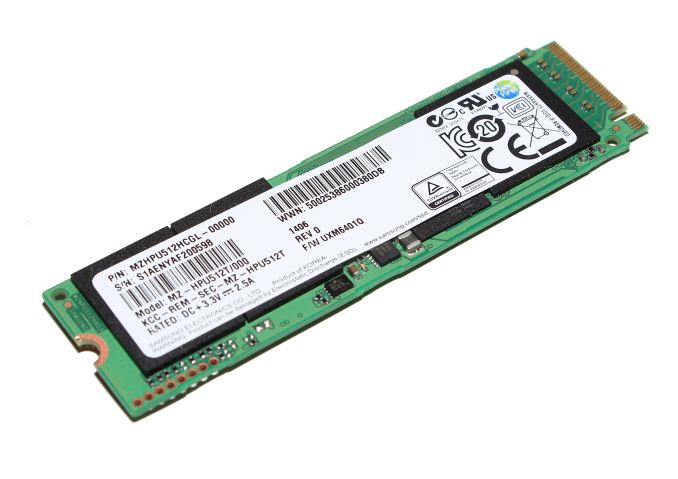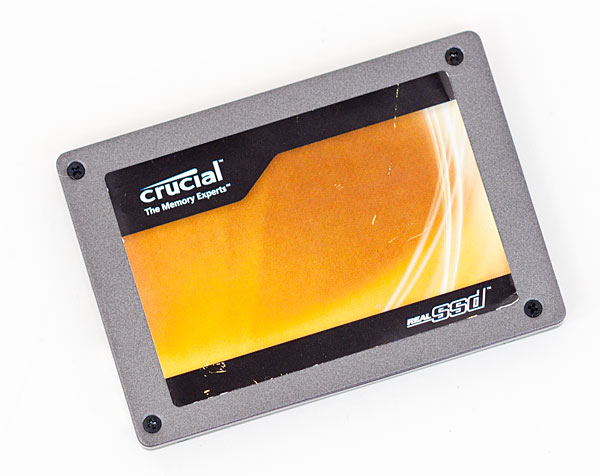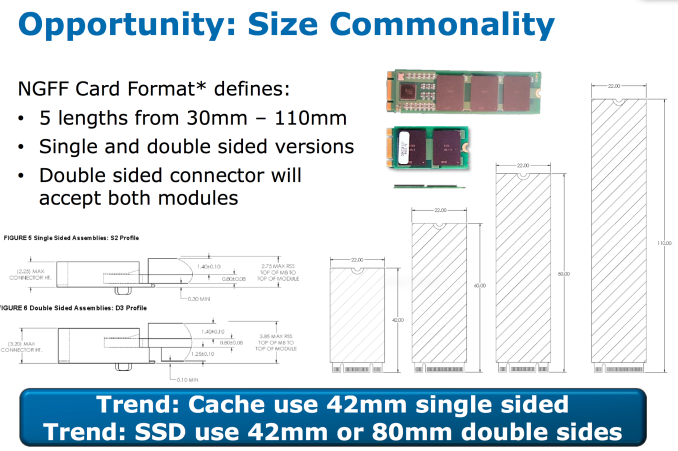Samsung SSD XP941 Review: The PCIe Era Is Here
by Kristian Vättö on May 15, 2014 12:00 PM EST
When SATA was introduced a bit over a decade ago, it provided major advantages over the old PATA interface. Not only was it faster and more power efficient thanks to the better signaling protocol, but the cabling was no longer big and clumsy with very limited length. It was no wonder that the industry quickly adopted SATA as the new interface for client storage and it has held its position throughout the years.
Since hard drives were the dominant storage media, SATA provided everything that the industry needed. The first generation SATA 1.5Gbps was already fast enough for the vast majority of use cases but about two years after the initial release of SATA, the second generation SATA was ready for prime time, doubling the throughput to 3Gbps. Even today's fastest hard drives can't fully saturate SATA 3Gbps, so there was obviously no rush to improve the interface as it already met the industry's needs. But that changed quickly around 2008.
The reason wasn't a sudden improvement in hard drive technology, but an emerging new technology that was based on non-volatile memory. We're talking about SSDs of course. The non-volatile memory part wasn't actually anything new as NAND has been around since the late 80s, but it was the first time NAND was being used in a PC form factor. Previously NAND had mainly been the choice for ultra mobile devices like MP3 players and phones but it was realized that the technology had the potential to be used in all computer-like devices, including PCs and servers. Since NAND was a solid-state semiconductor and it didn't have to rely on mechanical rotation, it allowed for much, much greater speeds. It's simply much faster to move electrons around a silicon chip than it is to rotate a heavy metal disk.
Obviously the first generation SSDs weren't all that fast and in many cases a traditional hard drive would still provide better sequential performance (although SSDs would destroy hard drives in a random IO workload). However, as the SSD companies learned to manage NAND and its characteristics better, the performance went up significantly. In 2009 we were already at a point where SATA 3Gbps was bottlenecking drives and a faster interface was needed to unleash the performance of NAND. Fortunately the Serial ATA International Organization (SATA-IO) had already released the standard for third generation SATA, which would again double the bandwidth to 6Gbps.
Crucial's C300
In 2010 we saw the first SATA 6Gbps SSD, Crucial's C300, make its appearance. Back then SATA 6Gbps wasn't integrated into chipsets yet and users had to buy a SATA 6Gbps PCIe card (or a motherboard with a third party SATA 6Gbps controller) to utilize the drive's full performance, but as soon as Intel was ready with their 6-series chipsets with native SATA 6Gbps support, every man and his dog came out with a SATA 6Gbps SSD.
But there was a problem. SATA 6Gbps still wasn't fast enough to meet the needs of SSD manufacturers as they were already able to saturate it. SATA-IO was given a difficult task: they would have to come up with a new standard with drastically better performance only a few years after the previous strandard had been announced. Not only would it have to be faster, but it also needed to be cost and power efficient. Instead of developing the SATA protocol further, which would have been expensive and time consuming, SATA-IO decided to utilize an existing interface found in every mainstream computer: PCI Express.
To allow backwards compatibility with the SATA interface, SATA-IO came up with two standards: SATA Express and M.2 (formerly NGFF). The idea behind SATA Express is that it routes PCIe and SATA 6Gbps signals to a single connector, which can then be used to connect either PCIe or SATA devices depending on the drive. It's mainly aimed at the desktop crowd and we did an extensive review of it just a while ago. M.2 on the other hand is the successor of mSATA and is electrically very similar to SATA Express. It also supports both PCIe and SATA 6Gbps signals, although ultimately it's up to the PC OEM to choose whether it will route both to the slot (i.e. you can have an M.2 slot with just PCIe or just SATA functionality).












110 Comments
View All Comments
BMNify - Friday, May 16, 2014 - link
rod, if you go ,as well as Everspin, look out for Crocus Technology Russian MRAM HW makers ARM licenced their IP , and Avalanche Technology tooRamCity - Monday, May 19, 2014 - link
Yes, I will be going to Computech. I'll add those vendors to my visit list and check out what they are up to if they have a booth.RamCity - Monday, May 19, 2014 - link
I mean Computex!Jay77 - Thursday, May 15, 2014 - link
I suppose I should read more than the first and last pages if I'm going to make comments.Babar Javied - Thursday, May 15, 2014 - link
There is a mistake/typo in "Performance Consistency & Trim Validation" under the "Trim Validation" section. Below the first graph in the said section, you have wrote "doesn't treat PCIe drives the same even if the utilize the same AHCI" when you ment to say "even if THEY utilize the same AHCI"Ryan Smith - Thursday, May 15, 2014 - link
Fixed. Thank you for pointing that out.BMNify - Thursday, May 15, 2014 - link
so basically you gimped the one and only raid 0 test by not doing it in windows or even better simply boot any linux iso/usb stick and formatted the ssd-xp941 WITH the samsung "F2FS" file system for maximum speed as that is written especially for ssdKristian Vättö - Saturday, May 17, 2014 - link
I did RAID the XP941s in Windows as well but the results were similar so I figured that there is no need to report the results separately.rocky12345 - Thursday, May 15, 2014 - link
I like that there are extra speed speed in these new devices but it seems everyone is so stuck on more speed more speed..lol I am sorry but when a standard SSD can boot a windows 7 in about 6 seconds when are people going to be happy. My Asus laptop has a SSD in it & boots in about 6 to 7 seconds & things like firefox open even before my finger un-clicks the mouse button to open firefox. now everyone is saying standard SSD is to slow..lol to funny. What I would rather like to see is bigger SSD drives at a better price. We already have good speed but the big drives still cost to much for most people when they can make a 1TB SSD at about the same or just slightly more than a standard hard drive then maybe they should be more worried about all these new extreme speed drives but if they make standard SSD drives go the way of the doo doo bird then we are never going to see low priced SSD anything because they will always be treating anything SSD related as new tech just a thought.BMNify - Thursday, May 15, 2014 - link
"but it seems everyone is so stuck on more speed more speed..lol I am sorry but when a standard SSD can boot a windows 7 in about 6 seconds when are people going to be happy..."well obviously speed is not for you, but how do you expect current non volatile ram to lower in price if they don't bring out newer kit to replace it at today's higher price points !
im not sure you understand the driving forces here as regards people wish for faster data access, we really need/WANT a so called "universal non volatile ram [such as those Everspin ST-MRAM DDR3 DIMMs referenced ]" sooner than later at equivalent ddr3 2400,wideIO2,HMC speeds and configurations so we can start to take better advantage of the higher data throughput and data manipulation these bring to the table, its not good enough to x264 encode UHD content in real time right now, then and only then will we start to consider we are starting to get close to enough general speeds, ALIMO.... YMCV